Session of the month
This is one of the 1200 training sessions from the feeton curriculum. This month, we’re sharing a session from the U10/U14 age group. Every session in the curriculum has a clear objective.
The goal of this session is to improve position play in the build up.
Each session within the curriculum has a specific goal.
Each exercise is supported by an image, an animation, a detailed explanation, required materials, and the field organization. Beneath each exercise, various icons may appear, providing links to additional supporting text and media:
- Explanation of the field organization
- Explanation of the skills
- Coaching points
Below the session, you’ll find several icons that refer to: field setup, learning objectives, and methodical steps.
Magic 5 (#03)
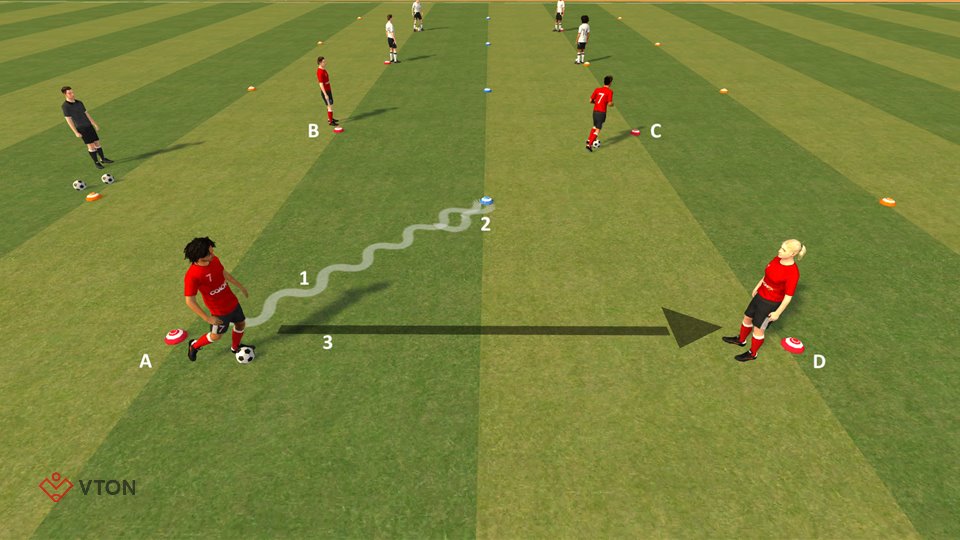
 10
10
 2-12
2-12
 10x10
10x10
 1
1
 5
5
Organization:
- 4 players work individually in a triangle.
- 4 players practice the turns individually.
Skill development: Players practice various Cutback moves. - Skill development: Players practise Cutback moves like the Maestro - The Pivot - Step over - inside foot & outside foot.
Coaching Points:
- Practice Left & right foot.
- Distance to the ball.
- Placement of none kicking foot.
- After turn accelerate.
- Close control !!
- Dribble at speed.
- Quick sharp turns.
- Linking different turns together.
Create multiple stations according to the number of players.
8 players set up 2 stations.
Building up reverse 2 : 1 (+1)
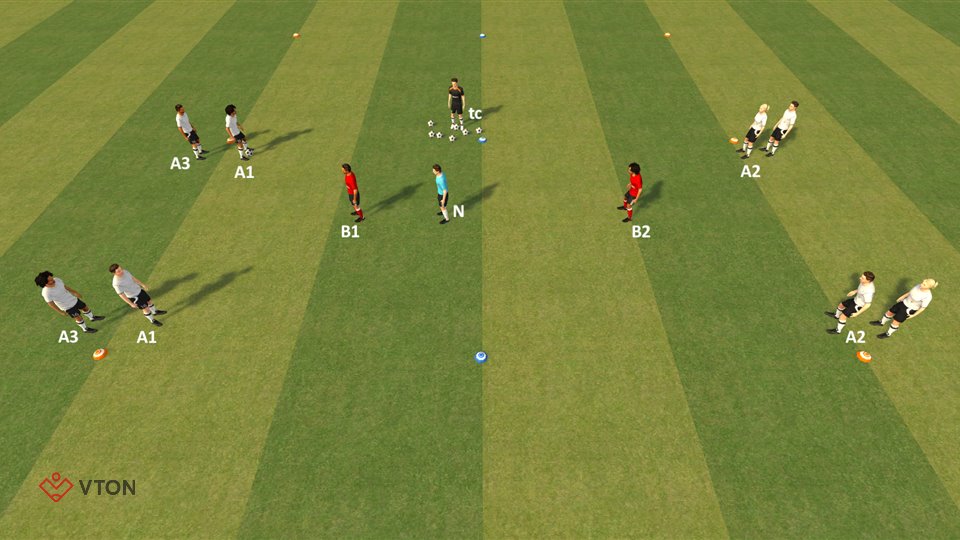
 15
15
 10-16
10-16
 20x10
20x10
 8
8
 3
3
 10
10
Organisation:
- A1, in cooperation with the neutral player, try to get the ball to A2 through a pass from their own box.
- If this succeeds, A1 join the back of the queue on the opposite side.
- B1 tries to prevent this by taking the ball away.
- B2 tries to intercept the pass from its own box.
- If B manages to intercept the pass then A1 is the new team of defenders.
- When A2 are reached, they try again to get the ball to the blue numbers A3.
- Ball out, then the coach immediately plays a new ball in to the next pair.
- Which pair reaches the other side most often without intercepting the ball?
Modified Game 3 : 2 -> 3 : 2 Line Dribble.
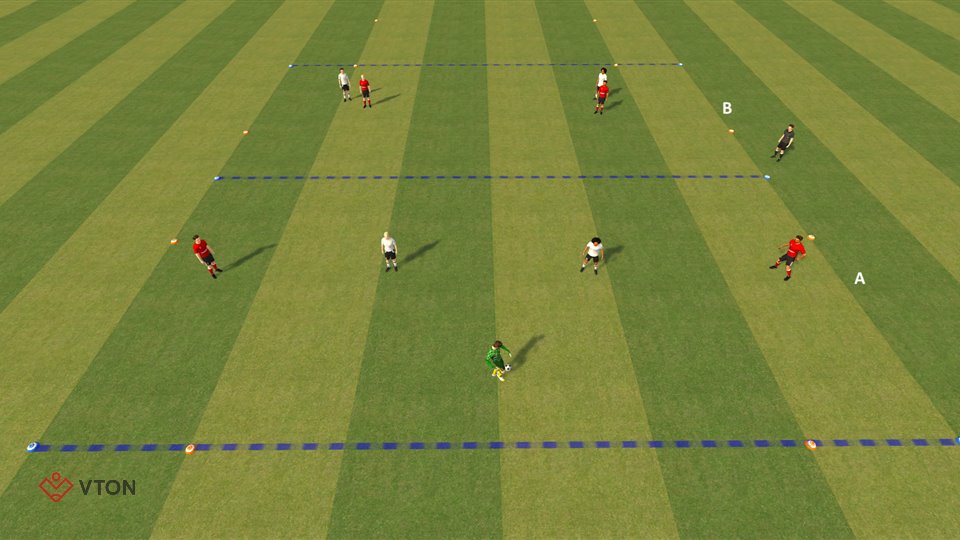
 12
12
 9-
9-
 30x30
30x30
 10
10
 9
9
 8
8
Rules:
- We have two boxes: A and B.
- In box A, team 1 starts with 3 players and team 2 starts with 2 players.
- After 3 passes, team 1 may play the ball to box B.
- If the ball is in box B, one player from team 1 may step in box B and play 3 against 2 in box B. Other players remain in their box.
- Team 1 must now score within 15 seconds by dribbling over the end line in box B. If they succeed they have a point.
- When team 2 prevents a score three times in a row (that can also be done in box A), they score a point.
- Which team will be the first to score four points? Then the teams change roles (and team 2 gets a player from team 1)
Modified Game 3 : 2 -> 3 : 2 (+GK)
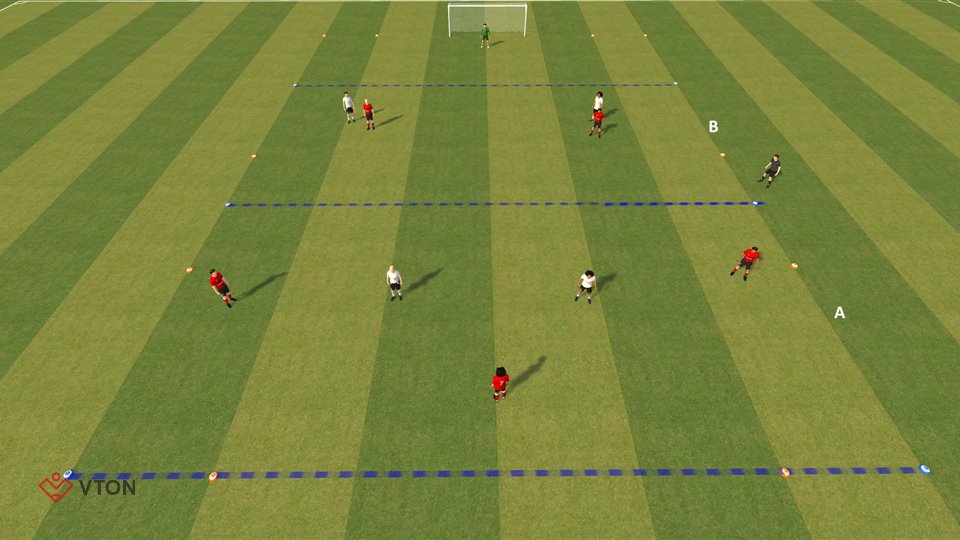
 15
15
 10-
10-
 40x20
40x20
 10
10
 9
9
 8
8
 2
2
 1
1
Rules:
- We have two boxes: A and B.
- In box A, team 1 starts with 3 players and team 2 starts with 2 players.
- After 3 passes, team 1 may play the ball to box B.
- If the ball is in box B, one player from team 1 may step in box B and play 3 against 2 in box B. Other players remain in their box.
- Team 1 must now score within 15 seconds. If they succeed they have a point.
- When team 2 prevents a score three times in a row (that can also be done in box A), they score a point.
- Which team will be the first to score four points? Then the teams change roles (and team 2 gets a player from team 1)
Coaching Points:
End Game 4 : 4 -> Connect to Halfway Line
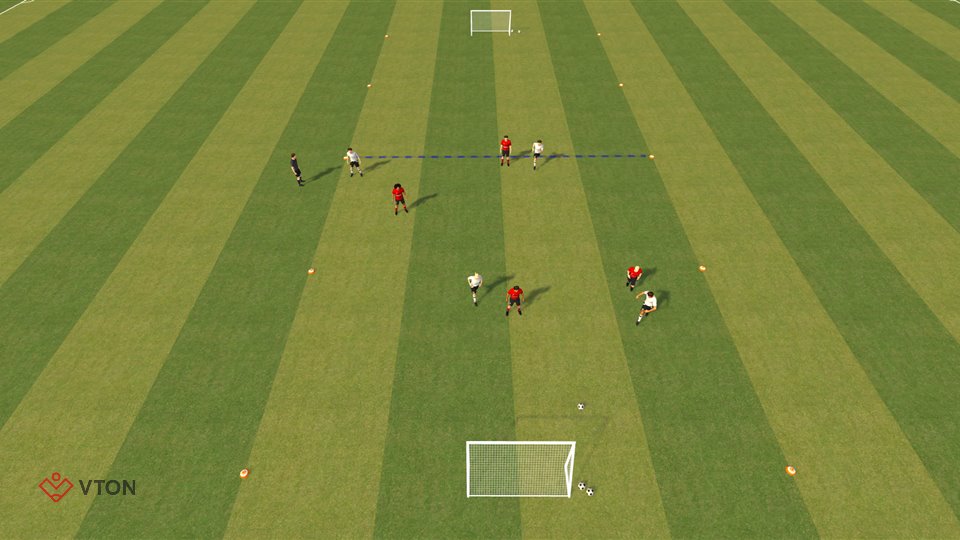
 15
15
 8-12
8-12
 40x20
40x20
 8
8
 8
8
 10
10
 2
2
Organisation:
- Make 2 equal teams (with or without goalkeepers)
- Create a halfway line with 4 cones.
- The goal only counts, at the time of scoring, if the entire team is over the halfway line.
- Or: Goal counts double if everyone on the team is over the halfway line.
Game rules:
- When the ball is out of play: dribbling in or passing in.








